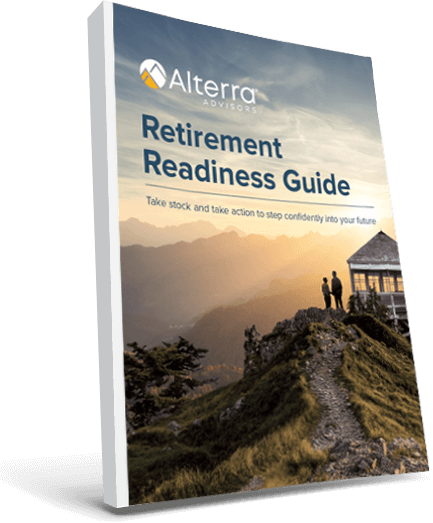“Should I make a change to my investment portfolio? What would you do differently?”
These are frequent questions we hear in a first discussion with a new client because they’re great questions. So, why is our response almost always “Well…it depends.”? Why can’t we just answer the question??
We first need to discuss the difference between a portfolio and a plan.
A portfolio is a tool, a plan is a blueprint
Let’s define our terms to start, then discuss why the question “Should I change my portfolio?” isn’t as simple as it seems.
- An investment portfolio is a combination of investments. No portfolio is inherently good or bad, it’s simply a strategy, a tool to help you achieve a goal…but what goal?
- A financial plan is your financial roadmap to creating the life you want. It should help you set goals, then evaluate and select the right mix of strategies to get you there.
Thought of another way, your plan is like the blueprint for a house. Your portfolio is like a tool used to help build the house. What tool do you need? Well…it depends (see why we say this so much?). Are you pouring the foundation or hanging drywall? The tool you need completely depends on where you are in your home building journey.
When someone asks if they have the right portfolio, we hear “do I have the right tool?”. And, to no one’s surprise, it depends on what you’re building. As we discuss in Safely Climbing & Descending the Wealth Mountain, your portfolio should look different at 40 years old when you still have two decades to invest than it does at 65 when you need stable income to enjoy your retired years.
Start with a plan, your financial blueprint
Design the house before you start building it. It seems obvious when you think about your home, but it’s just as important when deciding how to invest. Here are a few categories to think about when designing your plan.
- Set clear goals. Where do you want to go and what kind of life do you want to build? Investing for retirement needs a much different strategy than saving for college, a home remodel, or building wealth for the next generation…all goals we can integrate into a single plan.
- Determine your time horizon. Successful investing is a long-term proposition because nobody holds a crystal ball. The more time you have, the more risk you can afford to take, so it’s vital to pair your strategy with your time horizon for each goal.
- Anticipate risk. How do you respond to swings in the stock market? If your account was down 10% or 20% in any one year, is it time to panic? How about 30%? Panicking during market declines is one of the 4 Ways to Ruin Your Retirement, so try to decide in advance how you will act when your investments lose value and set your investment risk accordingly.
- Find your number. How much do you need to reach your goal and what can you contribute? If your goal requires $3 million but you can only save $1 million, you can adjust your goals as needed. We cover this process in detail in How Much You Need to Retire.
- Talk taxes. If you could choose, would you pay taxes today to have tax-free income tomorrow? Or would you prefer tax breaks today? Do you expect to pay less taxes in retirement? These questions can help work toward the specific tool you need for the job at hand.
If you’ve addressed these points, congrats! You’re well on your way to having a financial blueprint to follow.
The “right” portfolio is the best tool for the job at hand
With your financial blueprint in hand, we can answer the question, “Do I need to change my portfolio?”. If you’re nearing retirement, focused on generating stable income, and have a portfolio 100% invested in tech stocks, it’s time to consider a change. Why? There’s nothing wrong with tech stocks. People have made fortunes investing in these companies. But if you’re retiring soon, you likely can’t afford the massive swings these portfolios take. It’s like using a saw to pound nails: you’re likely to end up frustrated and (probably) injured.
This also helps you select the right metrics to evaluate your strategy. In My Portfolio & the S&P 500, we talk detail how to choose the an appropriate benchmark to evaluate success based on your goals.
The value of wealth management
These days, portfolios are (nearly) free and you can get them anywhere. So why does Vanguard, a pioneer of low-cost investing, say that the right financial advising and wealth management team can add as much as 3% or more per year to your investment bottom line? Vanguard says it’s all about the plan, choosing the right combination of strategies based on your unique blueprint…and then sticking to them when times get tough.
Before you can answer the question “Should I change my portfolio?”, start with your blueprint, choose your strategy, then select appropriate benchmarks to evaluate success. This is a tried-and-true approach to staying on the road to your financial success. For more about our process here at Alterra, we invite you to learn more about How We Work!
The Vanguard Group is not affiliated with Alterra Advisors or Lion Street Financial.
The “Alterra” name was coined by joining the Latin roots “alter”, the origin of the word “altruism” with “terra” meaning earth or land. This name reflects the company philosophy of “clients before profits” and providing firmly grounded advice.


